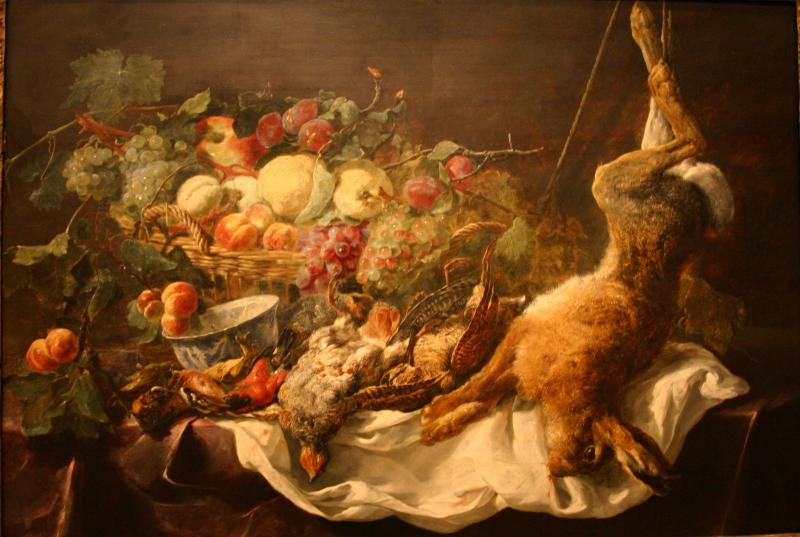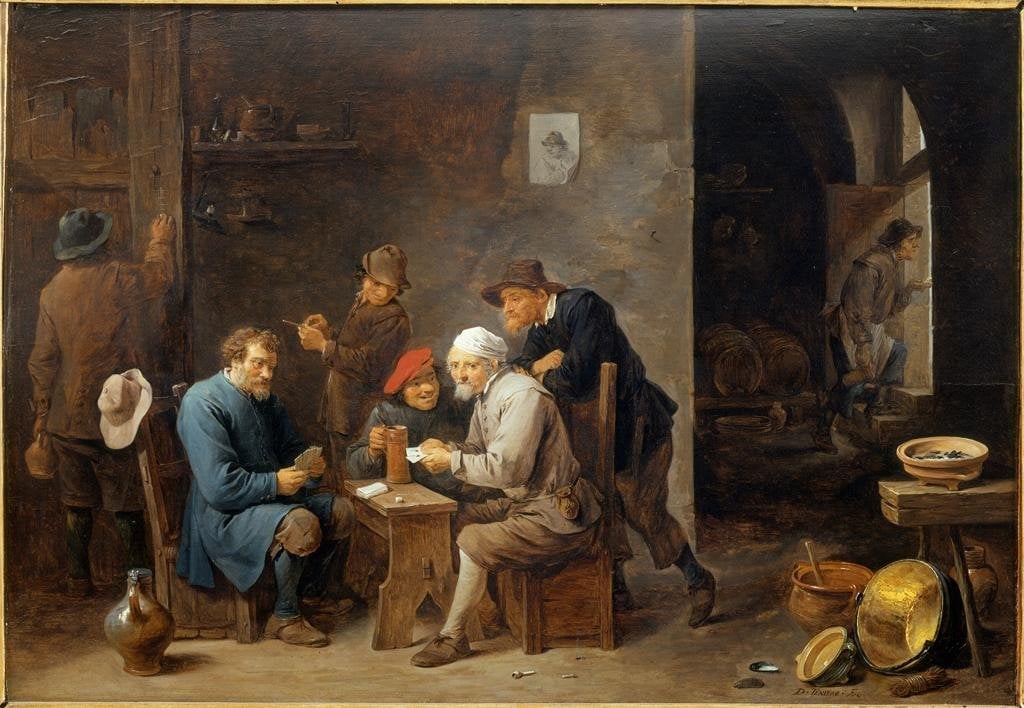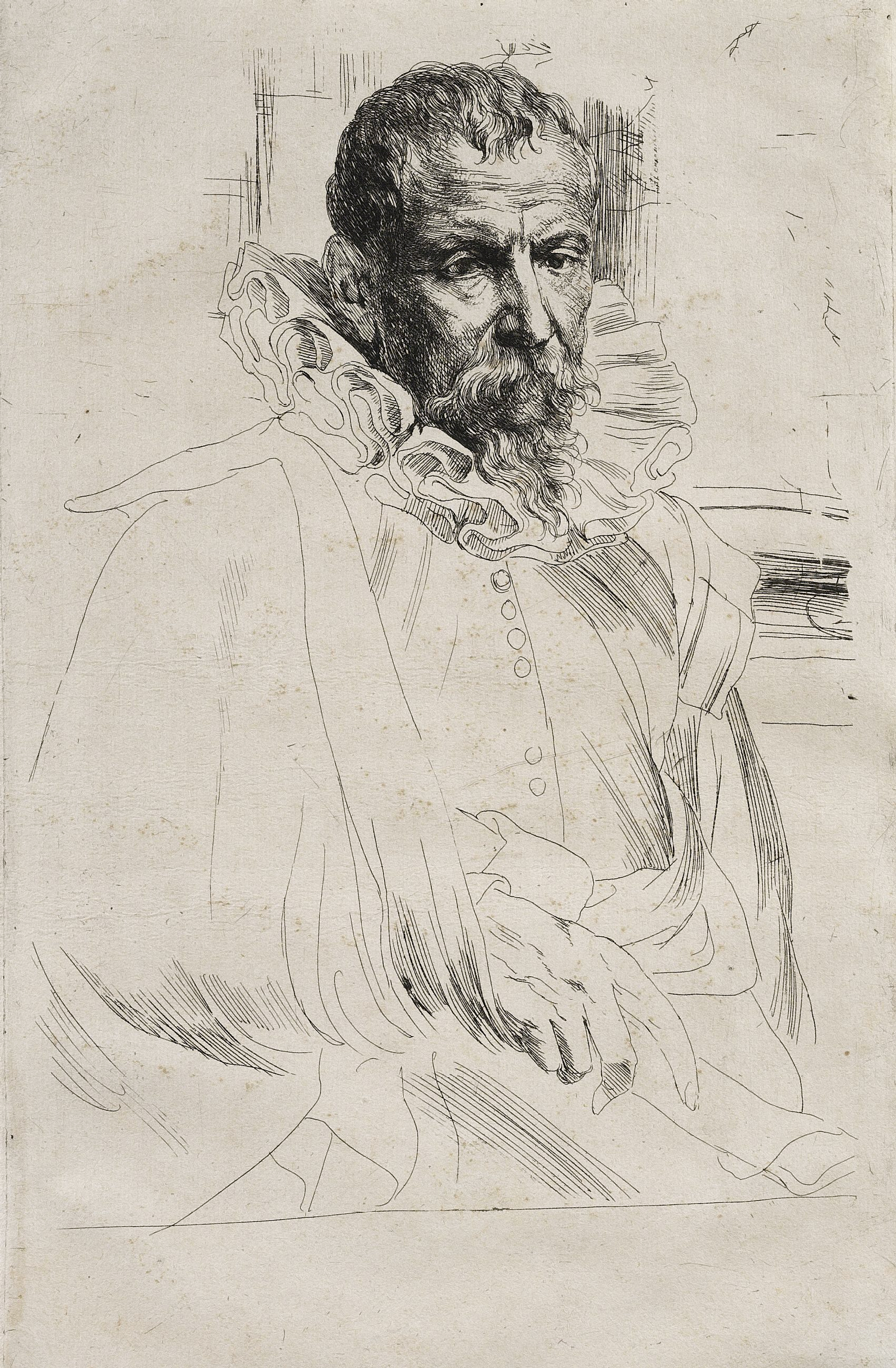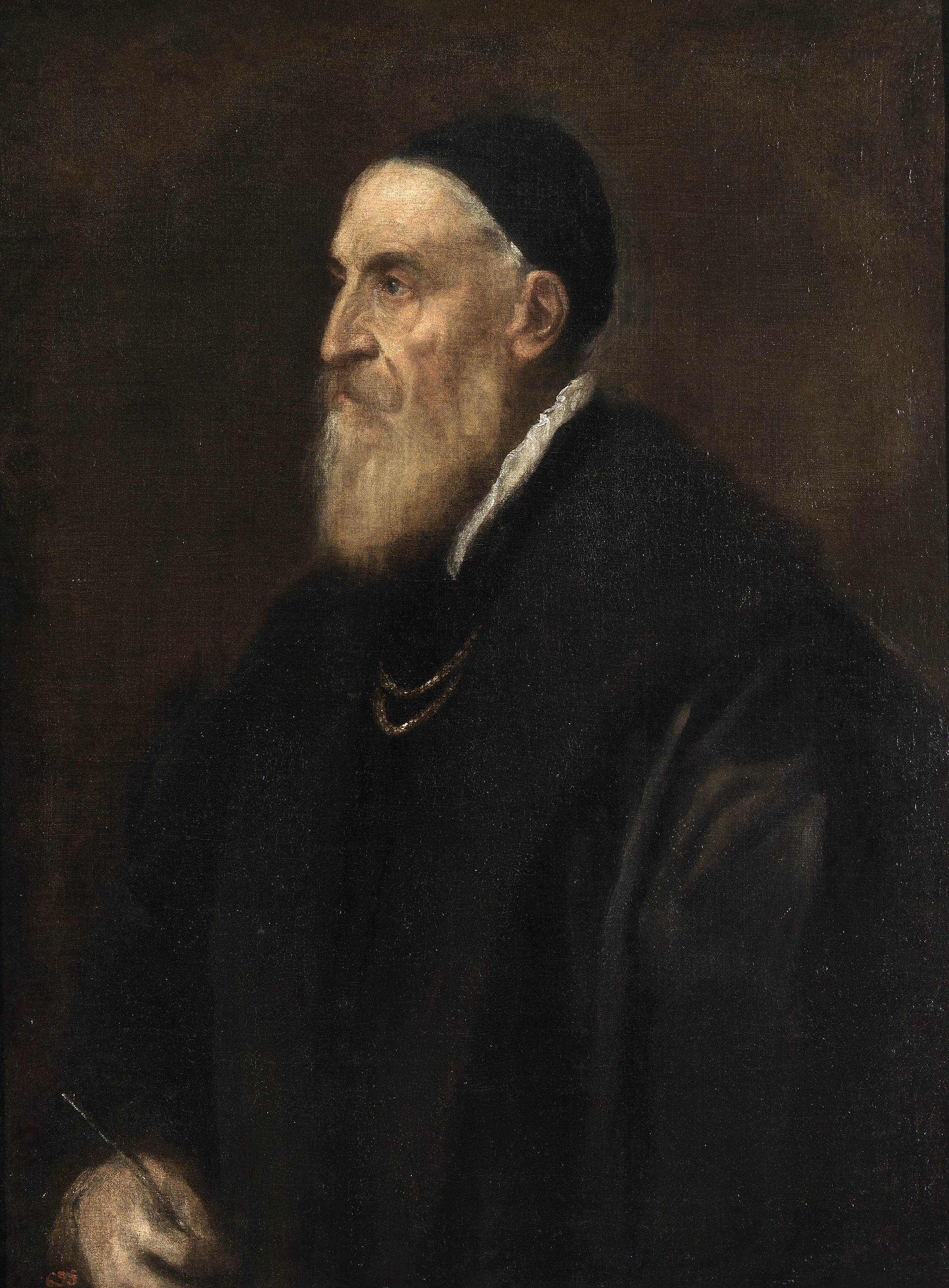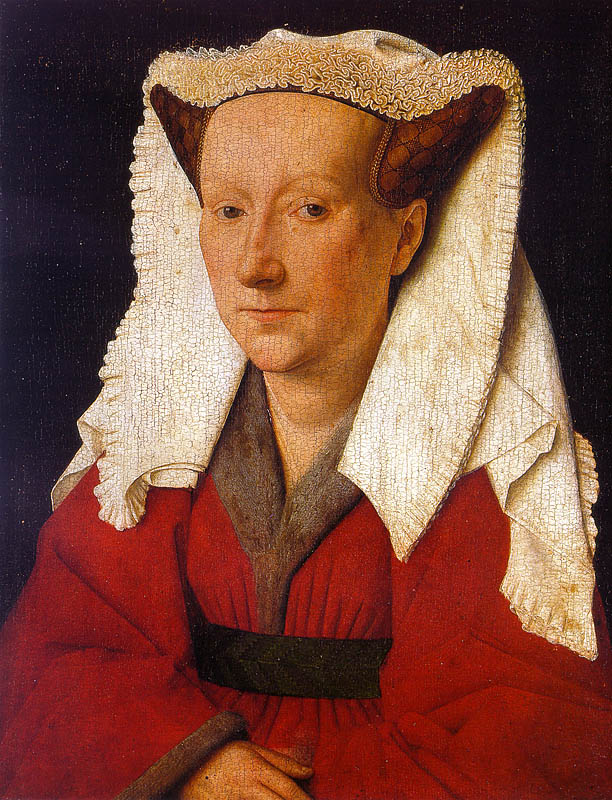5/21/2010
5/14/2010
Flemish painters - Jan Fyt -
Jan (or Johannes) Fyt (or Fijt) (March 15, 1611 – September 11, 1661) was a Flemish Baroque animal painter and etcher.
Born in Antwerp, where he was baptized on 15 June 1611, he was registered in 1621 as apprentice to Hans van den Berghe, who was a restorer of old pictures rather than a painter of new ones. Fyt then trained with Frans Snyders between about 1629-31, during which time, at the age of twenty, he entered the guild of St Luke as a master. From then until his death in 1661, he produced a vast number of paintings in which the bold facility of Frans Snyders is united to the powerful effects of Rembrandt, and harmonies of gorgeous tone are not less conspicuous than freedom of touch and a true semblance of nature.
He left Antwerp for Paris in 1633, travelling on to Italy the following year, where he worked in Venice and probably visited Rome (as he later joined the Guild of Romanists back in Antwerp). By 1641 he was back in Antwerp, where he married in 1654.
Fyt excelled in the rendering of animal life in its most varied forms. He may have been less correct in outline, less bold in action than Snyders, but he was much more skilful and more true in the reproduction of the coat of deer, dogs, greyhounds, hares and monkeys, whilst in realizing the plumage of peacocks, woodcocks, ducks, hawks, and cocks and hens, he had no equal, nor was any artist even of the Dutch school more effective in relieving his compositions with accessories of tinted cloth, porcelain ware, vases and fruit.
Anothr masterpiece of this fine flemish master is available as high quality print on our website, called Game Guarded by Dogs .
5/13/2010
Italian painters, Massimo Stanzione
Massimo was greatly influenced by Michelangelo Merisi da Caravaggio, but what earned him the nickname of The Neapolitan Guido Reni was his sophisticated and graceful style. The thing that distinguished Massimo’s art from Carravaggism was that he combined Caravaggio’s dramatically lit and brutally realistic style with the classical and lyrical manner of Bolognese painters.
Though his preliminary training is uncertain, it is thought that he studied with Fabrizio Santafede; however, most of the influence he received was from Caravaggio. Art historians believe that Stanzione developed his career as an artist in Rome. It is thought that he bagan his career as a portraitist. Some of his most famous works include Portrait of a Woman in Popular Costume, and Portrait of Jerome Banks. Between 1617 and 1630, it is believed that he traveled between the papal city and his hometown of Naples exploring different styles of art. Also influenced by Caravaggio were Artemisia Gentileschi, Simon Vouet, and Carlo Saraceni. During Stanzione’s career a movement that changed the style of art was formed. Stanzione was a part of this movement. This movement transformed the dark, contrasted Caravaggio-styled art into Bolognese colorism and soft art.
5/12/2010
Flemish Painters -David Teniers the Younger-
David Teniers the Younger (December 15, 1610 – April 25, 1690), a Flemish artist born in Antwerp, was the more celebrated son of David Teniers the Elder, almost ranking in celebrity with Rubens and Van Dyck. His son David Teniers III and his grandson David Teniers IV were also painters. His wife Anna née, Anna Breughel was the daughter of Jan Brueghel the Elder and the granddaughter of Pieter Bruegel the Elder.
It is estimated the David Teniers II created over 900 paintings during his life-time. Many of them are in private collections, but over 200 of them are in public museums, and have been digitally catalogued.
You can find two of his masterpieces available for print on our website : The Consultation and Country Pub.
**source: wikipedia.org
5/07/2010
Dutch Painters -Philips Wouwerman-
Wouwerman was first taught by his father, Paul Joosten Wouwerman, an historical painter of moderate ability. According to a contemporary account he had also studied with Frans Hals (1581/85-1666). Wouwerman became a member of its guild of painters in 1642, and he died after a successful career in his hometown in May 1668.
Wouwerman's authentic works, spirited and polished, are of great variety, showing equestrian scenes, hunting and hawking parties, landscapes with travellers, cavalry battles and military encampments. He very commonly includes a white horse as a highlight in the foreground. He excels in his vivacious treatment of figures, skillful animal painting, and appropriate landscape backgrounds.
You can find on our website to of his masterpieces available in print: - The Small Wooden Bridge- and also -Landscape with Packhorses-.
5/06/2010
Italian painters -Lorenzo Lotto-
Lorenzo Lotto (c. 1480 – 1556) was a Northern Italian painter draughtsman and illustrator, traditionally placed in the Venetian school. He painted mainly altarpieces, religious subjects and portraits. While he was active during the High Renaissance, he already constitutes, through his nervous and eccentric posings and distortions, a transitional stage to the first Florentine and Roman Mannerists of the 16th century.
During his lifetime, Lorenzo Lotto was a well-respected painter and certainly popular in Northern Italy. He was certainly not as highly regarded in Venice as in the other towns were he worked. He had an own stylistic individuality, even an idiosyncratic style. After his death, he gradually became neglected and then almost forgotten. This could be attributed to the fact that his oeuvre now remains in lesser known churches or in provincial musea. Even the top musea of the world possess each only a few of his paintings. Thanks to the work of the art historian Bernard Berenson, he was rediscovered and acclaimed as a master at the end of the 19th century. Since then, many monographs and several exhibitions have been dedicated to Lorenzo Lotto, such as the exhibition in Venice in 1953 and recently Lorenzo Lotto: Rediscovered Master of the Renaissance in the National Gallery of Art, Washington DC (November 1997-March 1998)
One of his masterpiece is available in print on our website, -Penitent Saint Jerome-, also here are just a few examples of his work: -Allegory of Virtue and Vice-, -Lotto's portrait of Andrea Odoni, 1527-, -Martyrdom of St. Claire-.
**source: wikipedia.org
5/04/2010
Flemish painters - Jacob Jordaens-
4/29/2010
Italian painters -Antonello da Messina-
Antonello da Messina, properly Antonello di Giovanni di Antonio (c. 1430 — February 1479) was a Sicilian painter active during the Italian Renaissance. His work shows strong influences from Early Netherlandish painting and, unusually for a painter from Southern Italy, he was influential on the art of North Italy, especially Venice.
Antonello was born at Messina around 1429-1431, to Giovanni de Antonio Mazonus and Garita (Margherita). He was probably apprenticed in his native city and in Palermo.
Around the year 1450, according to a 1524 letter of the Neapolitan humanist Pietro Summonte, he was a pupil of the painter Niccolò Colantonio at Naples, then one of the most active centres of Renaissance arts.
Around 1455 he painted the so-called -Sibiu Crucifixion-, which was inspired by the Flemish Calvaries and is housed in the Muzeul de Artǎ in Bucharest. Of the same years is the -Crucifixion- masterpiece available for printing on our website, his early works shows a marked Flemish influence, which it is now understood he derived from his master Colantonio and from works by Rogier van der Weyden and Jan van Eyck.
**source: wikipedia.org
4/28/2010
Flemish painters-Hans Memling-
Flemish artist of German origin, active in the Netherlands in the second half of the XV century. Born in Seligenstadt, near Frankfurt in the Middle Rhein region, it is believed that Memling served his apprenticeship at Mainz or Cologne, and later worked in the Netherlands under Rogier van der Weyden (c. 1455–1460). He then went to Bruges around 1465.
His paintings are stored in museums and public art galleries: you can find on our website Acurela.com two of his masterpieces -Portrait of a Man Reading- and also -Portrait of a women at Prayer- other important pieces of his work are -The Virgin and Child between St James and St Dominic-, -Last Judgement, Triptych- and many others.
4/27/2010
Flemish painters -Pieter Brueghel II, The Younger-
He painted landscapes, religious subjects and fantasy paintings. For this last category he often made use of fire and grotesque figures, leading to his nickname "Hell Brueghel".
Apart from these paintings of his own invention, Pieter Brueghel the Younger also copied the works his father had created by using a technique called pouncing. His genre paintings of peasants lack Pieter the Elder's subtlety and humanism, and emphasize the picturesque.
Regarding his work, pieter Brueghel painted the masterpieces: -Winter Landscape with Bird Trap- available for printing, on our website and an other work of his would be the -The Village Lawyer-.
4/26/2010
Flemish painters -Pieter Bruegel I, The Elder-

Pieter Bruegel the Elder (c. 1525 – 9 September 1569) was a Netherlandish Renaissance painter and printmaker known for his landscapes and peasant scenes (Genre Painting). He is nicknamed "Peasant Bruegel" to distinguish him from other members of the Brueghel dynasty, but is also the one generally meant when the context does not make clear which "Bruegel" is being referred to. From 1559 he dropped the 'h' from his name and started signing his paintings as Bruegel.
He was the father of Pieter Brueghel the Younger and Jan Brueghel the Elder. Both became painters, but as they were very young children when their father died, it is believed neither received any training from him. According to Carel van Mander, it is likely that they were instructed by their grandmother Mayken Verhulst van Aelst, who was also an artist.
Making the life and manners of peasants the main focus of a work was rare in painting in Brueghel's time, and he was a pioneer of the Netherlandish genre painting. His earthy, unsentimental but vivid depiction of the rituals of village life—including agriculture, hunts, meals, festivals, dances, and games—are unique windows on a vanished folk culture and a prime source of iconographic evidence about both physical and social aspects of 16th century life.
There are about 45 authenticated surviving paintings, one-third of which are in the Kunsthistorisches Museum in Vienna. A number of others are known to have been lost. On our website you can find the masterpieces -The Slaughter of the Innocent- .
Here is a small part of his work: -Landscape with the Fall of Icarus-, c.1554-55, Royal Museums of Fine Arts of Belgium, Brussels; -Netherlandish Proverbs-, 1559, - Gemäldegalerie, Berlin, -The Land of Cockaigne-, 1567, Alte Pinakothek, Munich
**source: www.wikipedia.com
4/23/2010
Italian painters -Tiziano Vecellio da Cadore-
Tiziano Vecelli or Tiziano Vecellio (c. 1473/1490[1] – 27 August 1576[2] better known as Titian was an Italian painter, considered the leader of 16th-century Venetian school of the Italian Renaissance.
"The classicism of the Veneto did not find its fundamental expressive force in the use of line to create its images, but in the development of tonal painting, creating noble forms of a solemn plasticity to attain, with Titian, an ideal of ample, monumental beauty, yet anchored firmly in earthly reality." [Umberto Fortis in The Uffizi: A Guide to the Gallery (Venice: Edizione Storti, 1980, p. 85)]
He was born in Pieve di Cadore, near Belluno (in Veneto), in the Republic of Venice. During his lifetime he was often called Da Cadore, taken from the place of his birth.
During the course of his long life Titian's artistic manner changed drastically but he retained a lifelong interest in color. Although his mature works may not contain the vivid, luminous tints of his early pieces, their loose brushwork and subtlety of polychromatic modulations are without precedent in the history of Western art.
Some of Titian's most acclaimed works were the -Assumption- for the Church of S. Maria Gloriosa dei Frari (1518) (in which the soaring movement of the Virgin is said to anticipate the later Baroque period), three paintings for Alfonso d'Este in Ferrara (-the Worship of Venus-, -the Bacchanal- and -Bacchus and Ariadne-) (1518-23), an altarpiece in Ancona (1520), a polyptych in Brescia centered on a -Resurrection of Christ- (1520-2), and the altarpiece for the Pesaro family side altar in the Church of S. Maria Gloriosa dei Frari (1519-26). Also, you can find on our website one of his masterpieces -Ecce Homo- available in print.
Titian remained active until his death in Venice at about age 91. His last work was a -Pieta-' (now in the Accademia Museum in Venice) created for his own tomb and completed after his death by Palma il Giovane.
4/22/2010
Flemish painters - Jan van Eyck-
Jan van Eyck or Johannes de Eyck was a Flemish painter active in Bruges and considered one of the best Northern European painters of the 15th century.
He perfected the newly developed technique of oil painting. His naturalistic panel paintings, mostly portraits and religious subjects, made extensive use of disguised religious symbols.
In the most substantial early source on him, a 1454 biography by the Genoese humanist Bartolomeo Facio (De viris illustribus), Jan van Eyck was named "the leading painter" of his day. Facio places him among the best artists of the early 15th century, along with Rogier van der Weyden, Gentile da Fabriano, and Pisanello.
Jan van Eyck must have been born before 1395, for in October 1422 he is recorded as the varlet de chambre et peintre (“honorary equerry and painter”) of John of Bavaria, count of Holland. He continued to work in the palace of The Hague until the count’s death in 1425 and then settled briefly in Bruges before he was summoned, that summer, to Lille to serve Philip the Good, duke of Burgundy, the most powerful ruler and foremost patron of the arts in Flanders. Jan remained in the duke’s employ until his death. Jan van Eyck died in Bruges in 1441 and was buried there in the Church of St Donatian (destroyed during the French Revolution).
His paintings are stored in museums and public art galleries: you can find one of his masterpieces on our website Acurela.com, -Man in a Blue Cap-, other important pieces of his work are -The Arnolfini Portrait-, -Portrait of a Man in a Turban-, -Portrait of Margaret van Eyck- and others.
4/21/2010
Italian painters - Giovanni Francesco Caroto -
 He initially apprenticed under Liberale da Verona (1445-1526/1529), a conservative painter infused with the style of Mantegna. Caroto after a stay in Milan, began responding to the other influences from Francesco Bonsignori, Leonardo da Vinci, Raphael, and Giulio Romano; but he never lost a certain individuality and his rich Veronese color. He is perhaps best known for having trained, along with the younger Antonio Badile, the prominent Mannerist painter, Paolo Veronese, who was active mainly in Venice.
He initially apprenticed under Liberale da Verona (1445-1526/1529), a conservative painter infused with the style of Mantegna. Caroto after a stay in Milan, began responding to the other influences from Francesco Bonsignori, Leonardo da Vinci, Raphael, and Giulio Romano; but he never lost a certain individuality and his rich Veronese color. He is perhaps best known for having trained, along with the younger Antonio Badile, the prominent Mannerist painter, Paolo Veronese, who was active mainly in Venice.4/20/2010
A few words about us!

The Brukenthal National Museum is situated in Sibiu, Romania in the palace of Samuel von Brukenthal who was Hasburg governor of Transilvania. He established his first collections around 1790, since 1817 his collections are opened to the public, making the Brukenthal National Museum the oldest institution of its kind in Romania.
The Art Galleries of the Brukenthal National Museum include a number of about 1200 works belonging to the main European schools of painting, from the 15th to the 18th century: Flemish-Dutch, German and Austrian, and Italian. The Galleries also include collections of engravings, books, numismatics, and minerals.

